
Illycaffè S.p.A. is a coffee producer with headquarters and production facilities in Trieste.
Founded in Trieste in 1933 by Francesco Illy, born in 1892 in Temesvár, Austria-Hungary (today Timisoara, Romania), who started a business in the cocoa and coffee sector and then decided to dedicate himself exclusively to the "nero", as the espresso is called in Trieste. In 1934, he invented and patented the "inert gas pressurisation" packaging system for the preservation of coffee aromas inside the can. In 1935, he deposited the engineering patent for Illetta, Illy’s professional espresso machine. In 1947 Ernesto, son of Francesco, entered the company and immediately made good use of his degree in chemistry by setting up the first company chemistry laboratory, and creating scientific synergies with international institutions.
In 1974 came the third international patent: the espresso coffee paper pods, a prelude to the ESE coffee pods. In the 1980s, the third generation of the Illy family brought an innovative marketing approach to the company, with respect to large distribution and new international markets. In 1988 Illy patented the system for the digital selection of coffee beans.
In 1992, Matteo Thun designed the new and current Illy cup, starting a fruitful relationship with the art world. With Andrea Illy, fourth-born of Ernesto, a new innovative impetus has led to the renewal of the historic brand. In 1996, from a work by pop artist James Rosenquist, the new illy brand was created. In 2007, Illy invented a new generation of espresso coffee pods, the Iperespresso (covered by five international patents), able to create a dense and persistent espresso cream.
The following year, thanks to a 50% joint venture between illycaffè and The Coca-Cola Company, saw the launch of Illy Issimo, a coffee-flavoured canned drink.
In 2013, Illy collaborated with Kimbo and Indesit to create the UNO pod system.
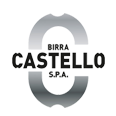
Birra Moretti of Udine has always been a company historically specialised in the production of beer, in keeping with the European tradition.
It was born in 1859 under the name of Fabbrica di Birra e Ghiaccio (Beer and Ice Factory) founded by the then thirty-eighty-year-old Luigi Moretti, a Friulian entrepreneur whose family was dedicated to the trade and wholesale of drinks and groceries.
The first bottle went onto the market in 1860. In those years, the production and consumption of beer in Italy were quite modest. Initially, a production of 2,500 hectolitres of beer was planned annually, sufficient to satisfy the provincial market. The Moretti family owned the company until 1989, and then sold the brand that through various passages was purchased in 1996 by Heineken, which is still the current owner.
The original plant of Udine was transferred to San Giorgio di Nogaro in 1992.
Following the allegations made by the Italian Antitrust Authority to Heineken regarding Heineken’s dominant position on the market, in 1997 the Dutch group was forced to sell the plant, which was bought by a new brewery group that owns still today the property, the Birra Castello Group, which also owns the historic factory of Pedavena in Veneto.
The main brand today is "Birra Castello" (Castle Beer). The castle has always been a minor element of the historic labels with the "moustached man" and is indisputably linked to the city of origin, Udine, with its symbolic castle.
The production of the historic Moretti and Sansouci beers, now exclusive property of Heineken, has been moved to various factories in Italy, all controlled by Heineken.
In that regard, the official website of the company says that in 1942 Commendatore Menazzi Moretti saw a senior gentleman with a large moustache sitting at a table in the historic trattoria Boschetti in Tricesimo, province of Udine. Moretti, thinking that the man could represent his beer well, asked for permission to take his photograph in exchange for whatever reward he thought appropriate.
In Friulian language, the man replied, "Just buy me a drink; that’s more than enough for me."
That photograph was then given to the illustrator Segala, alias Franca Segala, who designed the famous poster with the moustached man that soon became the corporate symbol.
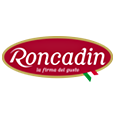
"By making both pizza and ice cream I got to the helm of Bofrost".
“Taking the Bofrost Group to 2 billion euro in revenue over the next 3 years is a reachable goal if we enlarge our customer base by still remaining in the same European countries where we work today, but increasing the number of travelling trucks and door-to-door sales. Second goal: achieving 100 million revenue with the Roncadin branded frozen pizzas and creating the conditions for integrations and mergers with other operators in the industry, consolidating our presence in Chicago for servicing the US market and, taking into account domestic growth and acquisitions and multiplying our volumes by 3 or 4 times over a three-year period. We will have to create a group capable of competing with the Germans." The "Germans" are indeed the world's biggest players in the sale of frozen pizza, with players like Nestlé, Cameo and Freiberger inundating the market with a myriad of Italian-like brand names. The two goals are set by Edoardo Roncadin, in his double role. One as chairman of the supervisory board of the German multinational Bofrost, the second as chairman and shareholder of the company based in Pordenone and bearing his surname. The common points between the two companies at the business level are cold chain management and door-to-door delivery. Another common point is Edoardo Roncadin himself, who at the age of 65 was called two years ago by Bofrost's founder to lead a group with a revenue of 1.2 billion-euro, operating in 12 European countries, with over 10,000 employees and about 5 million customers.
"We have been partners in Bofrost Italia since 1987 - says Roncadin- and Joseph Boquoi, who today is 82, asked me a couple of years ago to help manage the generational handover. I solely report to the Foundation, to which Boquoi has transferred the property in full, protecting it and stopping the insistence of investment funds. In fact, we have never had debts and we operate in cash, so we do not need banks or investors. Bofrost Italia, for instance, has a 10% cash flow and therefore why should we sell out? Anyway, here I am with a new challenge."
In fact, Roncadin has been commuting since he was not even 16 years old and with his father's savings - who lent him three million and a half lira, the same figure he had collected from relatives and friends at home - he went to Germany to open his first ice cream parlour. Since then, he has been at home in Osnabruck, in Lower Saxony. Now, every Sunday evening he takes a flight from Venice to Dusseldorf, headquarters of Bofrost, and returns to San Vito al Tagliamento on Thursday night. Between the first migration of 1965 and today's travels as the head of this multinational leader in the European frozen food sector, there is the journey of a lifetime. Full of business successes, but also of setbacks. There are so many photos in the album that can be classified under the "Adventure" category. Because ice cream parlours usually closed in winter, in the long, cold Nordic season in the 1970s the then 20-year-old migrant decided to turn ice cream shops into pizzerias. "Thus began the merge between flour products and sugar products, which is at the origin of our business," comments Roncadin. At the age of 20, with the first Renault 4 cars equipped with a fridge, he started the delivery of pizza and ice cream from Osnabrück. "Nobody had ever done it before." In 1970, during a trip to the United States with the German girl he had just married, Roncadin saw that malls had small shops placed just after the cash counters. Nowadays we call them “Shops in shops”. He set up about a hundred ice-cream parlours in shopping centres all over Germany, "because after shopping for their family, mothers are happy to buy ice cream for the children with the change they get back at the counter." To cope with such a large ice cream demand, Roncadin created the first semi-industrial factory in Osnabruck (which still exists today and which the former ice-cream maker from Pordenone has sold to the large R+R Company, where the first "R" stands for Roncadin and the second for Richmond). In 1985, Roncadin returned to Italy with his younger brothers Renzo and Siro. 1987 is the year of the 40% partnership with Bofrost for the establishment of the company in Italy (which in 2014-2015, recorded revenues for 217 million euro). "We however missed our pizza. We are talking about a market that in Europe is worth 3 billion of frozen pieces consumed at home every year, of which 1.2 billion are consumed by Germans, who produce 2 billion pieces with Italian-sounding brands. My brother Renzo invented an industrial oven with a wood heated lava stone floor and then, in 1990, we started the Meduno factory, which was a great success since inception and which, with my son Dario, we bought back in 2009", says the Friulian entrepreneur. Here there is a break in the story, one of the setbacks. In 1999, the company was placed on the stock market, with the aim of settling its debts and securing its development. "It was a terrible shock," remembers Roncadin, "when, on Monday morning, despite the fact that we had pre-orders for 200% of the offered shares at the maximum price, we saw the values taking a dive. Realised we were the country boys to be taken for a ride. We had to recapitalise, with 10 million euro out of our own pockets, and the banks were pushing us to join forces with Parmalat. I don’t know why, but Tanzi was hesitant. I’m still grateful today to Calisto! Then, again pushed by the banks, we fell for an even worse trap. A man called Di Dario needed a means to place his Arena group on the Stock Exchange." This part of the of the story ends with the Roncadin family ousted by Di Dario in 2004 with a hostile takeover and with Edoardo focusing totally on Bofrost Italia. The story however turned back with the employees of the Roncadin Company, which meanwhile had gone bankrupt, knocking at the founders' door in 2008. Dario convinced his father Edoardo to start again. Last year, the company recorded revenues for 92 million euro and employed 450 people in the production of pizzas, 73% destined to foreign markets.
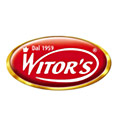
Witor's mission has always been to share the passion for chocolate with its consumers, offering innovative quality products, suitable for all tastes and perfect for daily consumption. Witor's was founded in 1959 by Roberto Bonetti, who opened his first chocolate workshop in Cremona. One of the first creations of Witor's was the "Boero”, an ingenious blend of extra dark chocolate, liqueur and cherries. The success in the 60's and 70's of this praline was immediate: the product achieved great reputation and was distributed throughout Italy, with a widespread market presence that was unique in those years. Every coffee shop in Italy hosted the famous tree-shaped display with the Boeros wrapped in red paper, with the well-known game "tear off and win a Boero". Since then, Witor's has undergone a substantial evolution. Its offer has expanded to the whole world of chocolate with innovative and winning solutions for an ever-evolving marketplace: from pralines (the segment where Witor's is the undisputed leader) to bars, snacks and biscuits, distributing its products to more than 70 countries around the world with an annual production of over 36,000 tonnes, while still maintaining its tradition and extreme attention to the quality of its products, combined with typically Italian creativity and style.
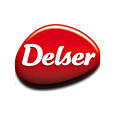
DELSER was founded in 1891 by the entrepreneurial spirit of the homonymous family from Martignacco and began to produce biscuits, wafers, candies and later biscuits for babies.
Very famous and renowned at the time was the "Phosphorous Biscuit", which was recommended by paediatricians since it was highly digestible and rich in mineral salts.
The first recipes came from the convent tradition of the Canossian nuns.
Initially, and for many years, the production control was entrusted to the wisdom and authority of the nuns, who monitored the work of the personnel with precision and rigour.
In 1908, the first factory was built in the centre of Martignacco, a small village 6 km Northwest of Udine.
In those years, Delser became a provider of the Royal House of Savoy and of the Papacy, and received the Royals twice for a visit to the factory.
The event is remembered by a beautiful marble plate, which is preserved at the entrance of the current headquarters.
Some biscuits, in honour of their most noble consumers, were named after the members of the Royal House: we can mention the two biscuits Margherita and Elena.
Delser established itself throughout Italy and abroad, participating in important trade events and receiving recognitions for the high quality of its products.
The widespread demand of Delser products and the various honours gained in multiple exhibitions gave a strong boost to the Company managed by the Delser brothers with tenacity, intelligence and foresight. They introduced modern machinery and started producing a wide range of biscuits with growing success in Italy and abroad
Pastry biscuits, filled wafers and candies were packed in beautifully decorated tin cans.
Still today, there are collectors who look for those unique boxes, unfortunately hard to find.
In 1915, packaging was done entirely by hand and only many years later it was replaced by automatic packaging machines.
Already from its first years of activity, Delser's share of female employees compared to the total workforce was quite high for those times.
This made the company, in addition to an industrial reference point for the entire Friuli, also an emancipation factor for the female population of neighbouring towns.
In 1950, during the Italian after-war reconstruction effort and economic revival, the Delser brand continued its expansion to conquer the homes of Italians and to be known and appreciated in the rest of the world.
Thanks to the know-how acquired over time, Delser not only has maintained, but has also increased its position and relevance in the Friulian territory, remaining a very well-known industrial entity and certainly the most important food producing company in the area.
The current production site was built in 1972. Over the years, it has been expanded several times to meet new production needs and install new lines.
In the new factory, the company introduced the latest technology offered at the time, in order to meet the new challenges of a rapidly expanding market.
In the 1970s, Delser began a close collaboration with the most important Italian and European multinationals. This led to the emergence of new products that are still present in the homes of consumers in many countries under the most famous brands.
In 2001, in order to adapt to the new changes in the international market, Delser changed its name to Quality Food Group S.p.A.
From the end of 2011, a further expansion has been introduced, which will increase the available space for production departments, raw material warehouses, packaging lines and finished products.
The Delser brand, a mark of quality and long experience, continues to expand thanks to a renewed and innovative entrepreneurial spirit.
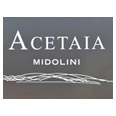
The vineyards immersed in the heart of the “Colli Orientali” of Friuli provide unique and exclusive products, the fruits of an artisanal culture of over half a century as well as of a careful research for quality. Asperum balsamic vinegars and Rosacroce wines are the main points of excellence of the Midolini company. From the past to the future, also thanks to the collaboration of important partners, the family run company is projected towards new challenges, while keeping tradition alive.
The adventure of the company began in the late 1960s, thanks to Lino's enthusiasm and perseverance. His multifaceted spirit and entrepreneurial drive, led him to turn his passion for vines and wine into a real business.
Inspired by the ancient tradition of balsamic vinegar, in these lands dating back to the time of ancient Romans, Lino filled the first small vinegar casks that have now reached the record number of 2300.
The vineyards - the origin
The soft countryside between the Eastern Hills of Friuli-Venezia Giulia, from Attimis to Buttrio, is particularly good for viticulture, producing great renowned wines for several centuries and for a long time now sold under a Controlled Origin denomination. This land, some millennia ago, was completely under the Adriatic Sea. This remote past is behind the characteristics of excellence of the terroir, which alternates layers of limestone clay with calcified sands, all within a frame of homogeneous atmospheric equilibrium. At the crossroads of a mosaic of Mediterranean and Mitteleuropean cultural influences, this territory is a protagonist of the continent's viticulture. The element which links the various centuries is the cooked grape must, the sweet and sour sauce used to flavour dishes throughout the ancient Roman Empire, including Venice and Istria and the region that included Forum Julii, of which Aquileia was the capital.
The farm covers 100 hectares of hill ground, including 35 hectares of cultivated vineyards and 30 hectares destined to vineyards, between the municipalities of Manzano, Buttrio and Premariacco. The vineyards, particularly well exposed and sheltered by a wide mountain range, enjoy ideal microclimate conditions.
They sink their roots into rich and productive land and give life to fine grapes that are suitable to be transformed into wine and Asperum.
The vinegar - its valorisation
Immersed in the heart of the “Colli Orientali” of Friuli territory, the vinegar cellar brings the history of its past, when local farmers used it as a barn. Today, it has been restored maintaining the ancient charm of the large trussed roof, which is well suited to the philosophy of the company, i.e. the combination of experimentation and tradition.
Today it houses 2300 small casks made of very fine woods that are part of what is considered a real home. The place where the dream of creating a balsamico from precious musts has become a reality and where feelings, dreams and innovative projects are shared. This is the place where the Asperum takes its shape, colour and, above all, flavour.
On a daily basis, the master vinegar-maker walks with a steady and attentive pace among the rows of casks arranged with decreasing capacity from 75 to 10 litres. He checks everything carefully and makes sure that nothing interferes with the proper ageing process.
The small casks are carefully crafted from seven different precious woods: mulberry, ash, robinia, cherry, oak, chestnut and juniper. To protect the bung holes of the casks there are pieces of white linen, whose warp and weft could narrate the story of the vinegar cellar from the beginning. These small pieces of fabrics, in fact, were initially cut by hand by the women of the family and have the purpose of letting the vinegar breathe and encouraging the oxygen exchange with the outside.
In the “Colli Orientali” of Friuli, a unique history has come to life, culminating in the production of a "balsamic sauce".
"Since then, the entire family has pursued this challenge with intelligence and conviction, focusing primarily on quality with the goal of only achieving top level productions."
Gloria, daughter of Lino, today carries the baton, combining the artisanship of the past with a modern vision that knows how to interpret the needs of markets as well as those of authentic taste lovers.
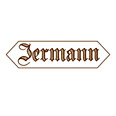
Jermann is the story of a passion that comes from far away. Anton Jermann, the founder, left the Austrian wine region of Burgenland and his vineyards in Slovenia to establish himself in Friuli Venezia Giulia. It was 1881. Here his winery business continued, until Sylvio Jermann took the company to an undreamed of success in the seventies (thanks to his genius and imagination) making it one of the top wineries first in Italy and then in the world. Today, the Jermann property extends over 150 hectares, of which 130 are vineyards and 20 hectares are dedicated to seed and horticultural crops. A company which interacts with the world every day but whose attention remains constantly focused on the concrete elements that make a great wine. In short, love for the land is the cornerstone of this farm, a great pearl of the Collio, renowned for its exceptional whites but also for its robust and traditional reds. In the new cellar, technological innovation is cleverly integrated with architectural tradition. Sylvia and Felix, large oak barrels, create a magical atmosphere. It is the same material that was used 50 years ago; and the passion remains the same too, passed from generation to generation. Inaugurated on 07.07.07, the Jermann estate of Ruttars, in the heart of Dolegna del Collio (GO), is surrounded by over 20 hectares of vineyards and was designed exclusively for the vinification of Capo Martino and Vignatruss - whose vineyards are right beside the cellar and Where Dreams and Vintage Tunina wines, that more than other have decreed Jermann's success. The soil, unique for its characteristics, is light and fresh. Temperatures are not too hot and cold nights allow the aromas and scents not to be dispersed and to pass from the bunch directly to the wine.
JERMANN, FOR A SUSTAINABLE AGRICULTURE
In the Jermann farm, the land cultivated with the organic farming method is about 18 hectares, concentrated in the municipalities of Moraro, Farra d'Isonzo and Dolegna del Collio (Gorizia). Jermann BJO’s organic production is grown without the use of chemical fertilisers, pesticides or herbicides. The flours, stone milled according to tradition, have been packaged in a modified atmosphere since 2008, to guarantee the highest quality. The slow drying on grids ensures a healthy product development (this drying technique is mainly used for beans, in some cases also for corn, for other products the time of harvest is chosen according to the humidity level). Internal bread testings allow the immediate testing of the quality, fragrance and texture of the finished product. Vacuum packaging is carried out in the premises to better preserve the organoleptic characteristics of the product, maintain its nutritional properties and preserve the product from unwanted parasites. The skilled staff follows every single process, including labelling and storage, always in the Ruttars winery. The targets of Jermann's organic production are: high quality, absence of chemical residue and maximum protection of the environment and biodiversity, guaranteed by the total absence of such residues and any additive or preservative. Jermann's BJO product line ensures a healthy nutritional style, while respecting tradition. It does not contain genetically modified organisms.
The leading label of the Ruttars company has reached 25 years of age
Silvio Jermann has chosen an original anniversary, namely the silver anniversary of his "wine of the heart", the DREAMS to make a toast with over 150 agents arrived to Ruttars from many parts of the world, as well as with his family, collaborators and best friends. A day full of anecdotes, emotions, testimonials, but also engaging "vertical" tastings and technical insights that included lengthy discussions, among other things, about the long debated issue of cork stoppers versus those made of alternative materials or screw caps - which, also due to frequent disappointments with the traditional ones - are currently the company’s choices not only for the UK and US markets but also for the domestic one. An undoubtedly controversial choice that, in the programs of Sylvio Jermann, will gradually affect also the signature wines, namely Picolit, Vintage Tunina, Dreams and others. For now, however, let us limit ourselves to knowing better the wine being celebrated.
W... Dreams ... ... ... A wine, a dream.
It is born on a marly sandstone, from a Guyot training with up to 7900 vines per hectare. It is produced with Chardonnay grapes (97%), alcohol content 13.5%, acidity 5.50 ‰; wine life of 8 to 10 years. Ageing for 11 months in small 300-litre barrels made of French oak. The tasting: "... Dreams ..." from Chardonnay grapes. It has a shiny straw yellow colour. To the nose it offers charm and complexity with aromas of rare elegance and refinement. Prevailing exotic hints of ripe fruit, melted butter, vanilla, pastry. In the mouth, it keeps all the promises of its aroma, confirming and enriching them with gentle flavours and fresh and persistent aromatic nuances. (Duemilavini Guide 2003 AIS, Dreams 2000). Dedicated to the U2's rock album "The Joshua Tree" released in 1987 and in particular to the song "Where the streets have no Name". "This wine - remembers Sylvio - was born with the 1987 harvest and over the years its name has undergone several variations. In the first nine-year cycle it had the name "Where the Dreams have no end..." and had the peculiarity of a different colour of the capsule every year, referring to the seven colours of the rainbow plus the white and black on the label, beginning with white and progressing anticlockwise. The four lunar phases were also depicted on the label. In 1996 it became "Were Dreams, Now It's just wine!" It had a blue capsule portraying a stylised Hale-Bopp comet. This version went on for another seven years. Finally, in 2003, we somewhat returned to our roots, with: "W.... Dreams ... ...... ", adding below the year of harvest and having Mars on the capsule. We interpret the dots in the name as "Where Dreams can happen". Anyway, everyone can have different interpretations to it. A curiosity: The label of "Where the Dreams have no end ..." was used in the playing hit film "The Parent Trap" by Walt Disney, a 1998 comedy directed by Nancy Meyers starring Natasha Richardson, Dennis Quaid and Lindsay Lohan (twice, twins playing) ".